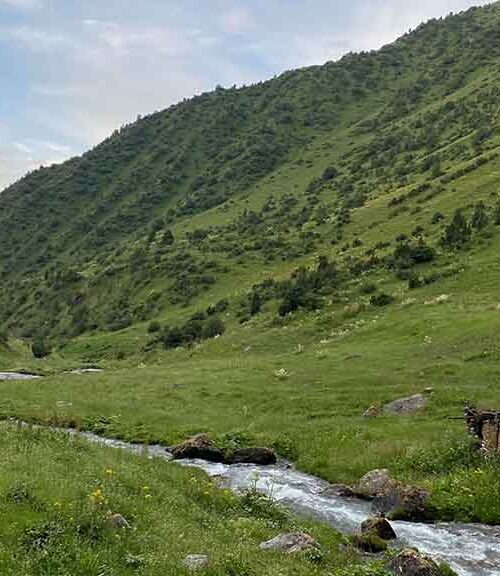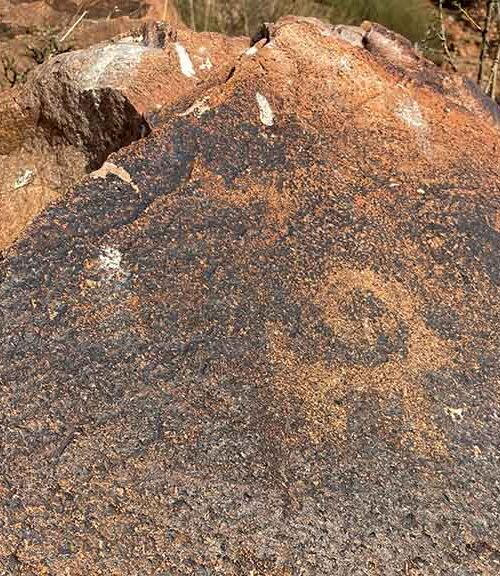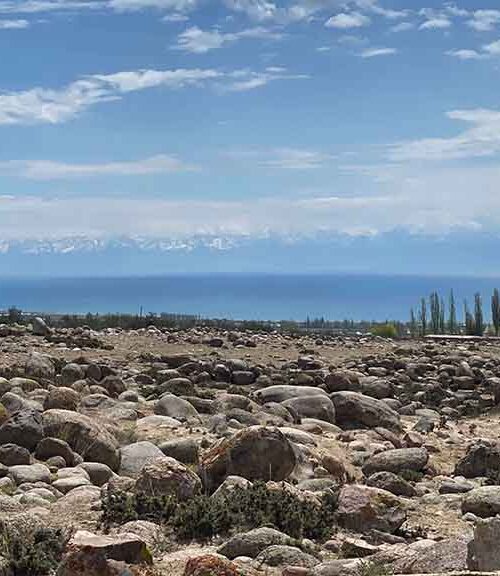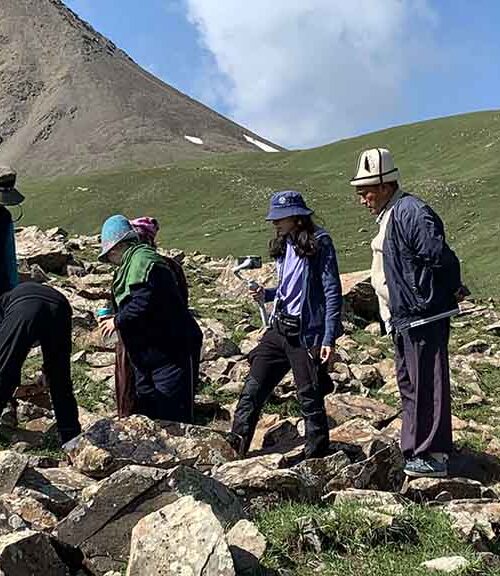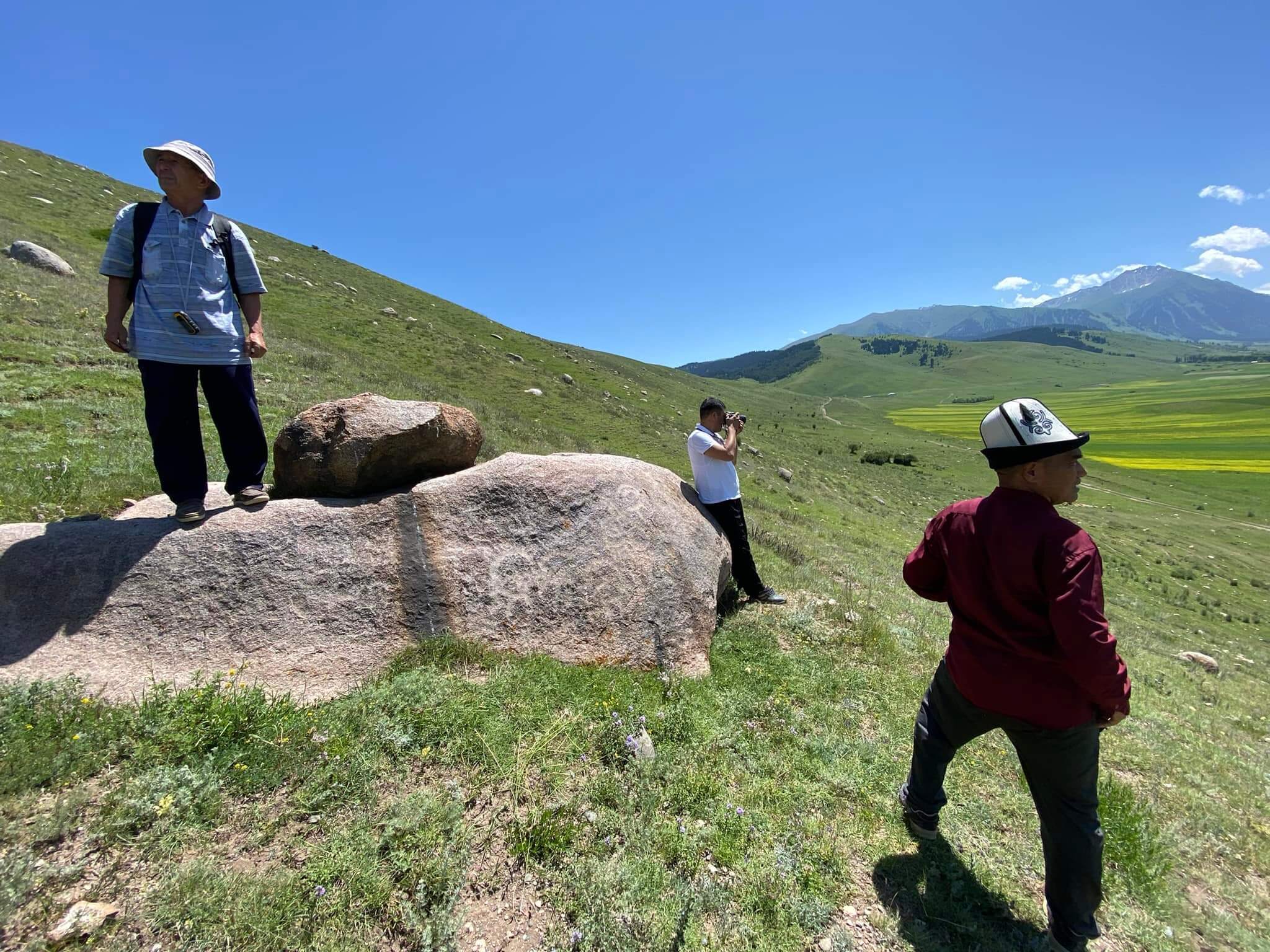
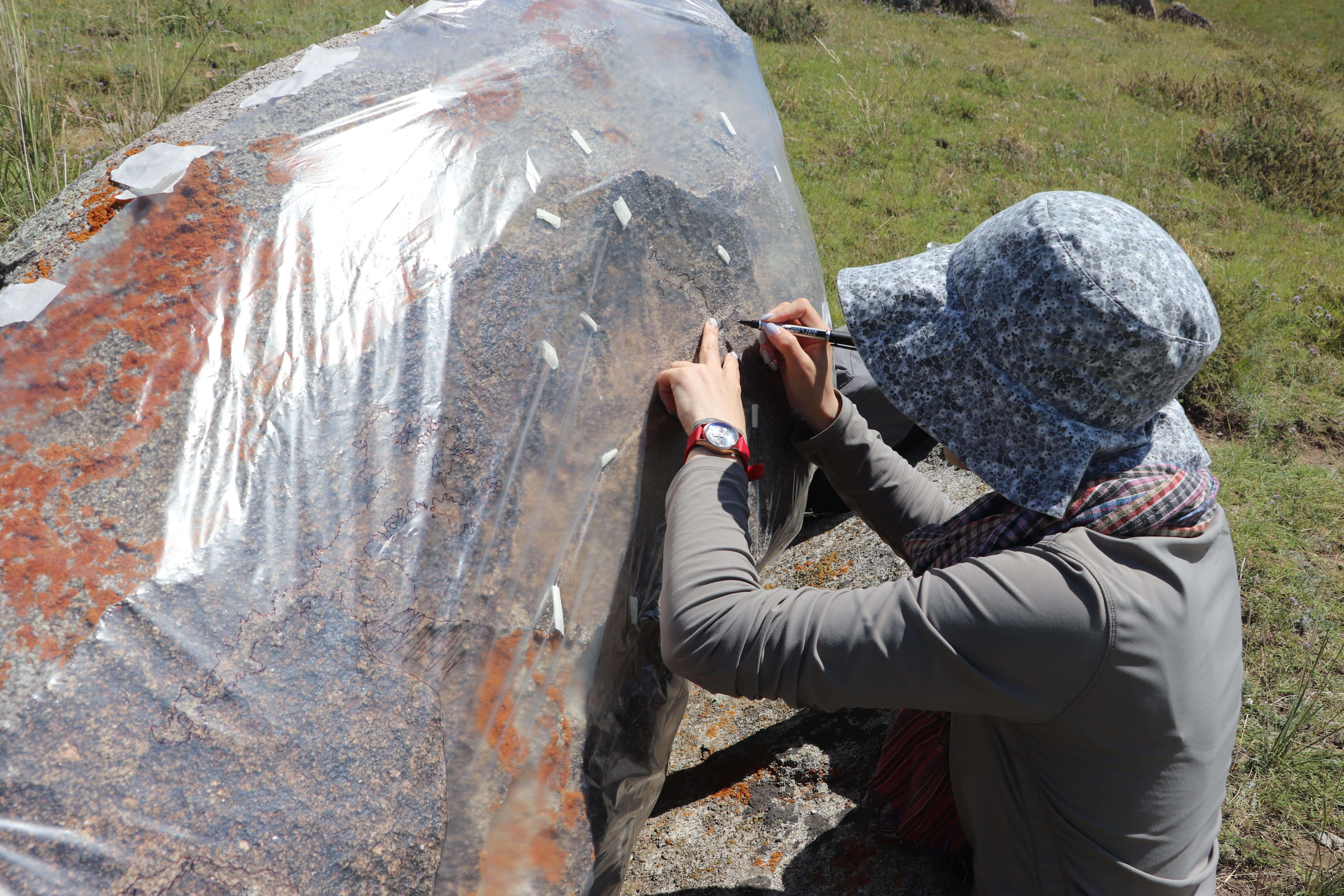
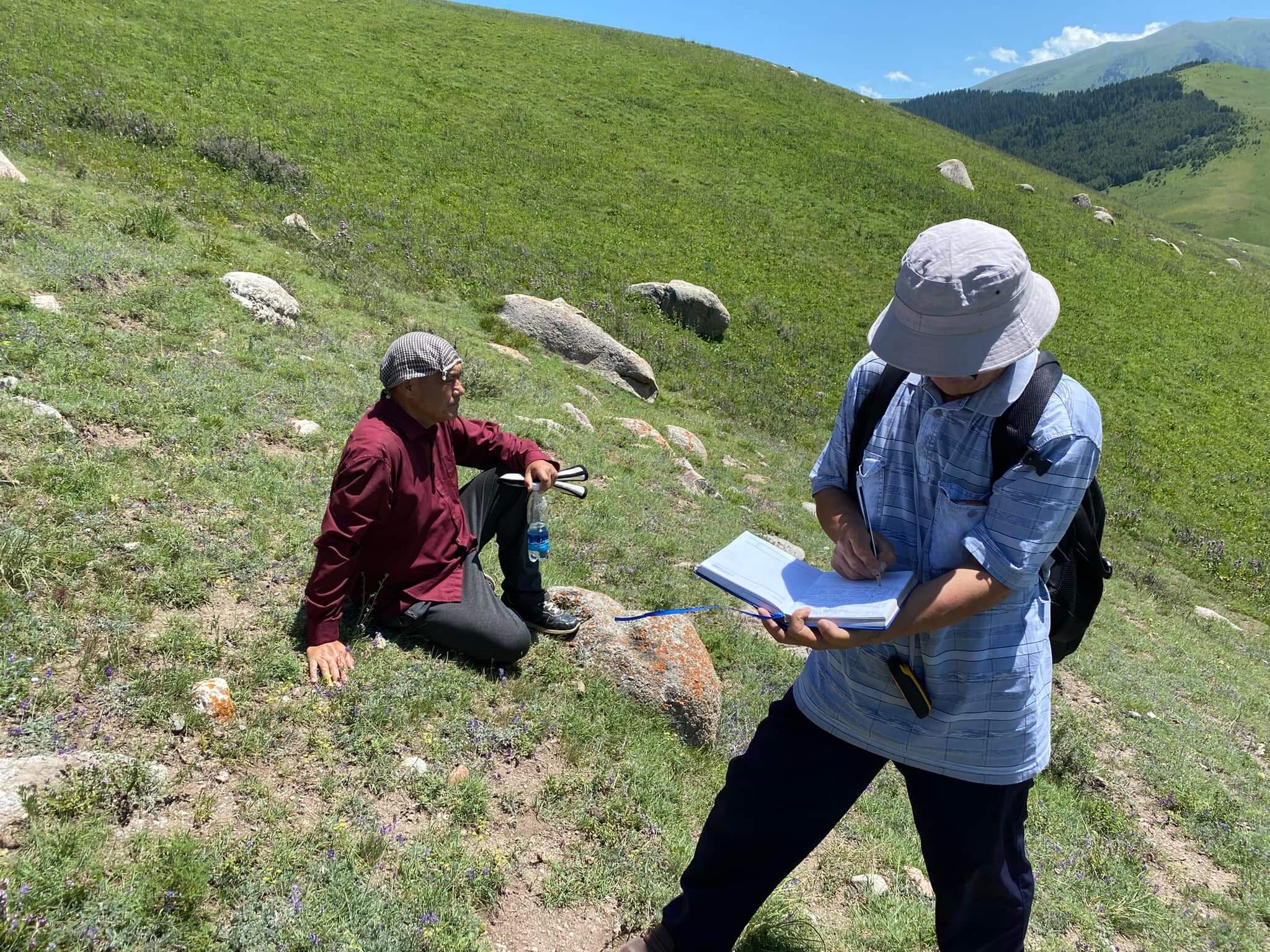
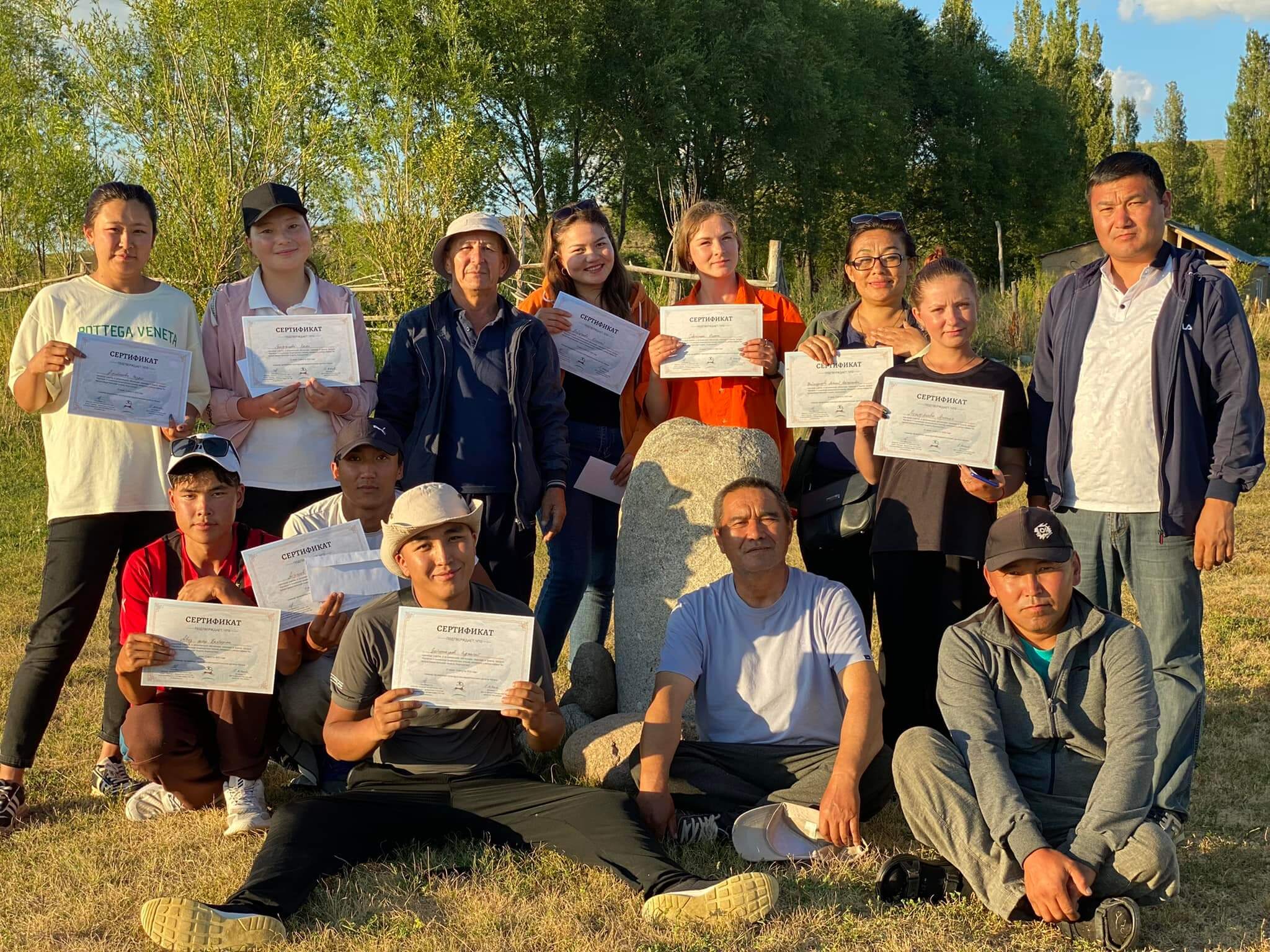
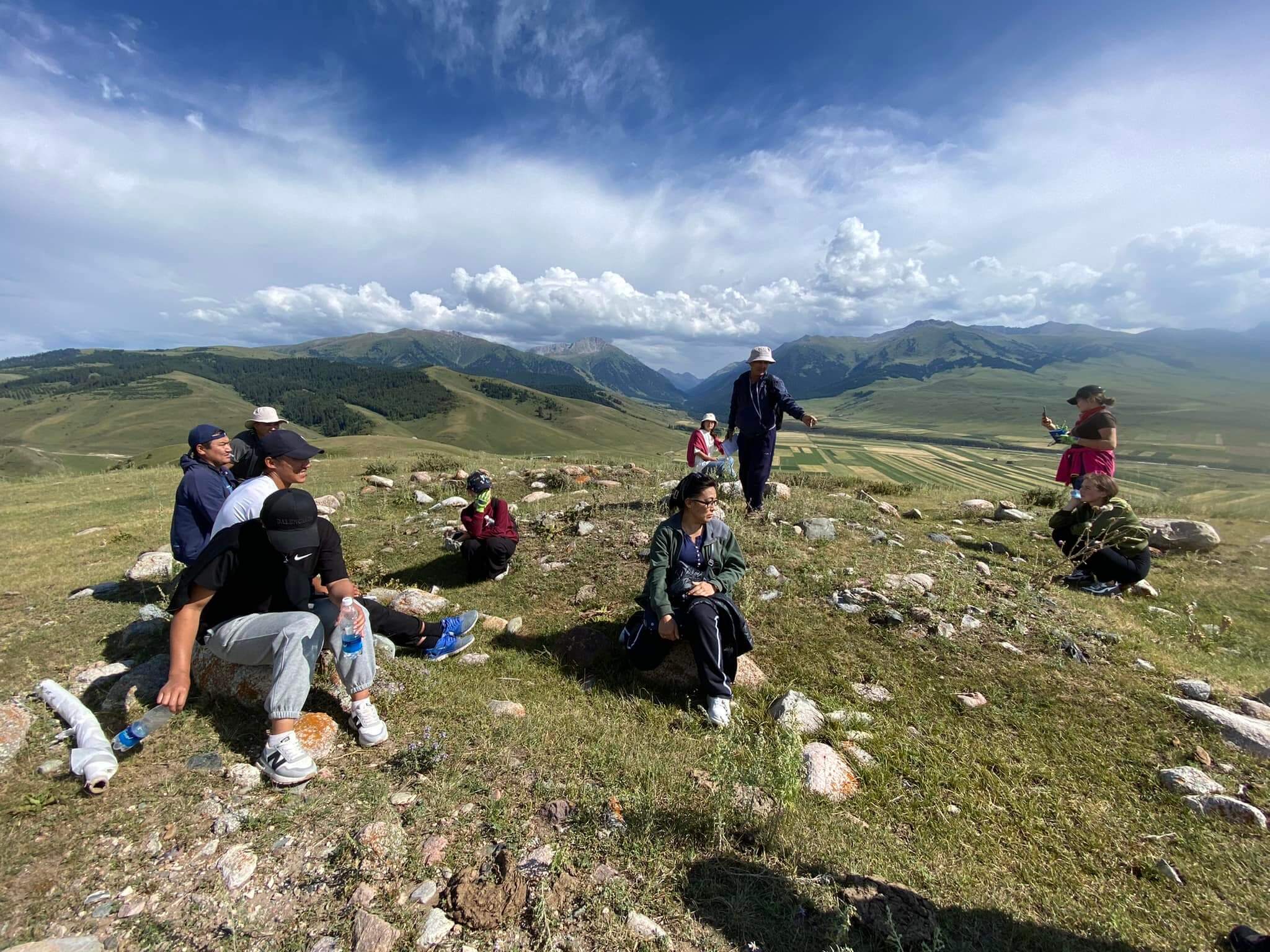
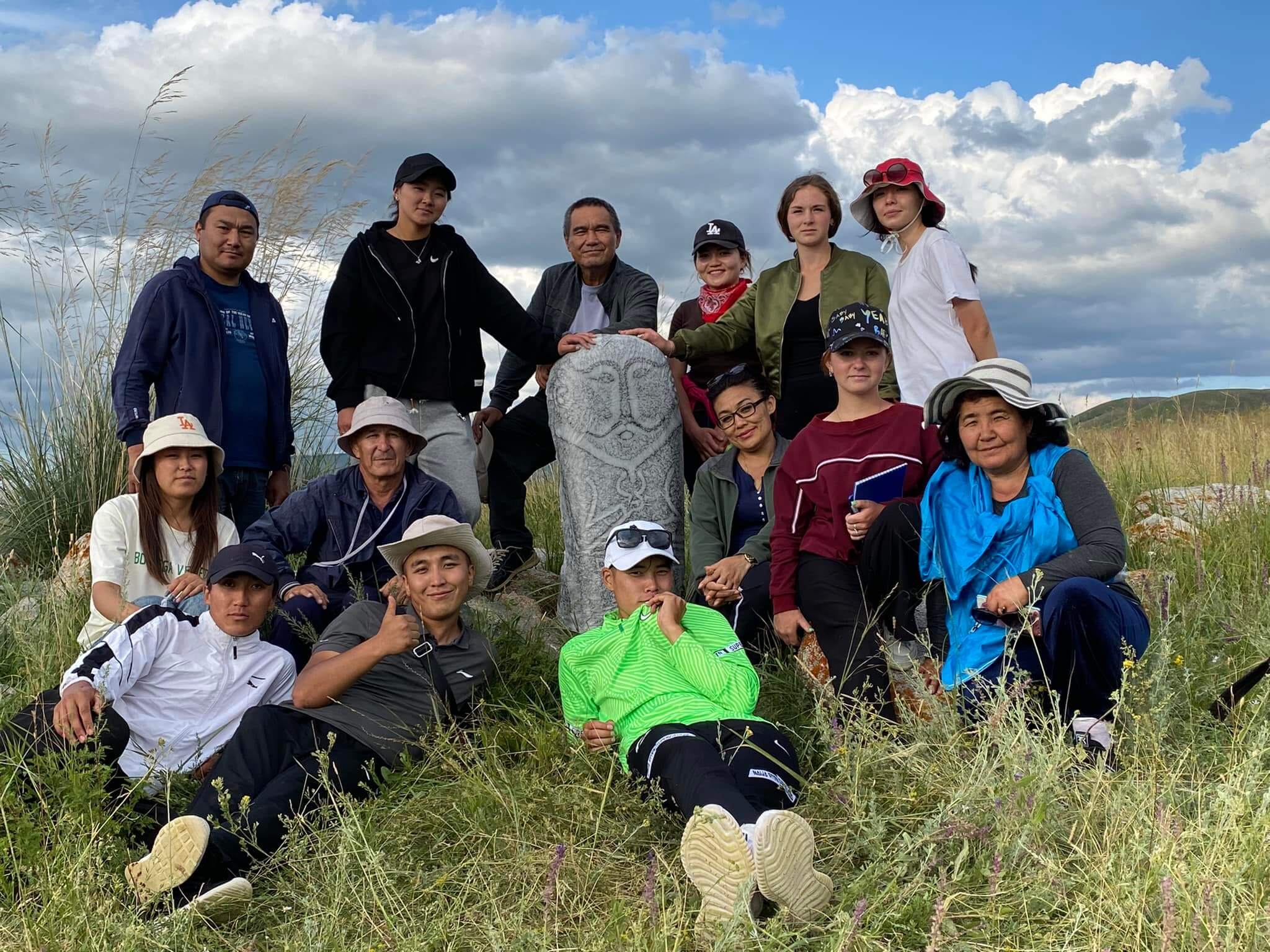
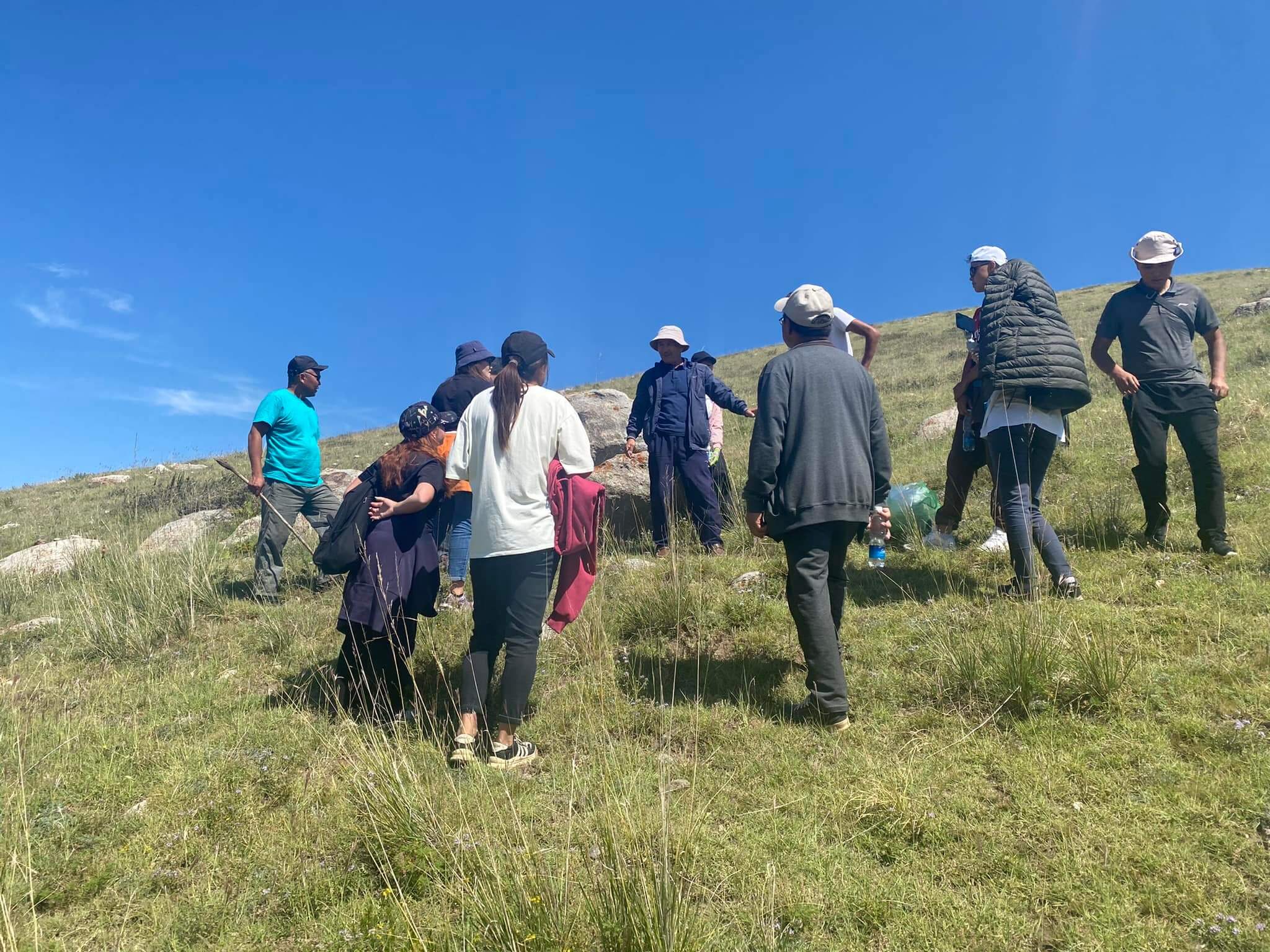
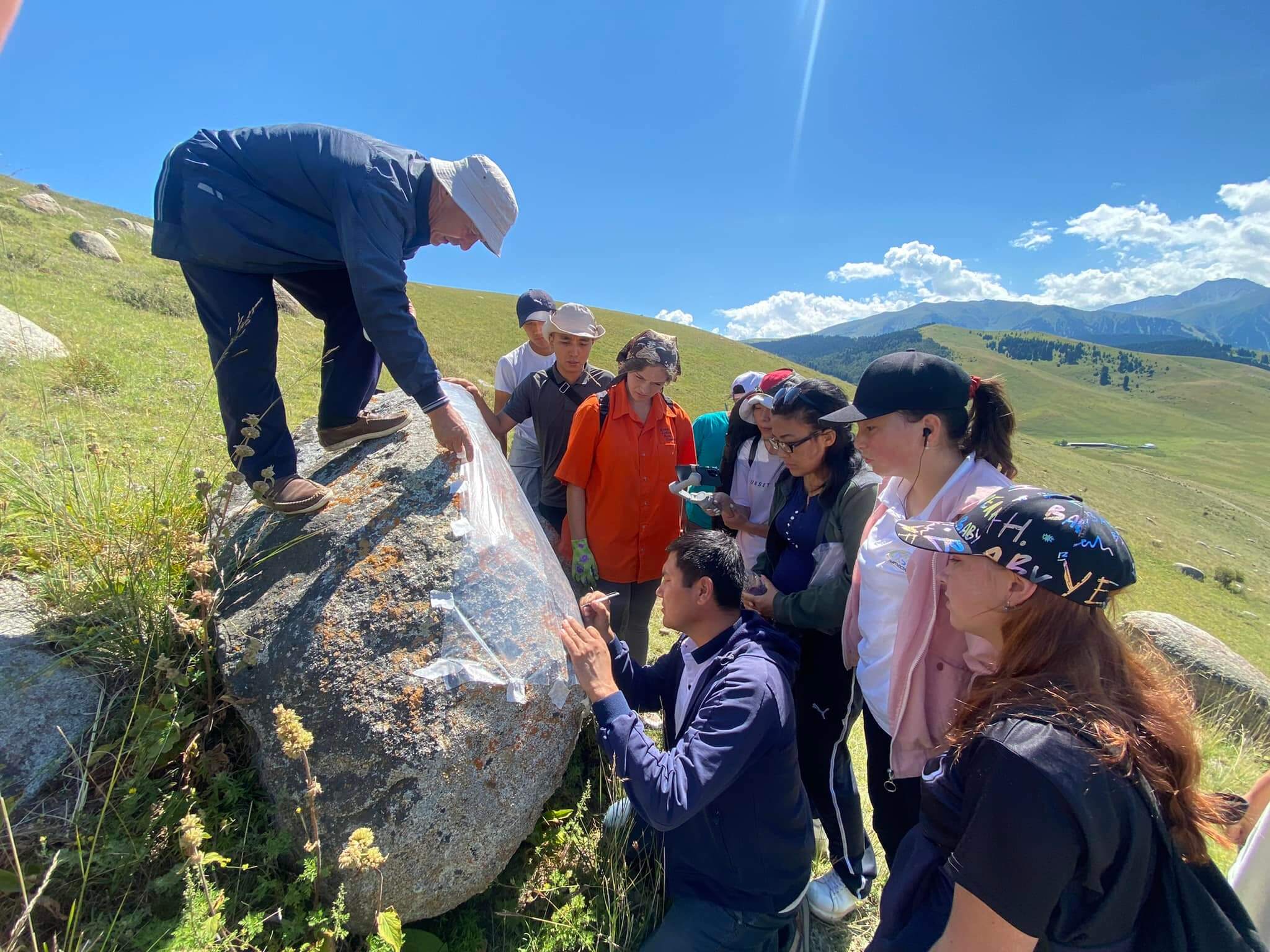
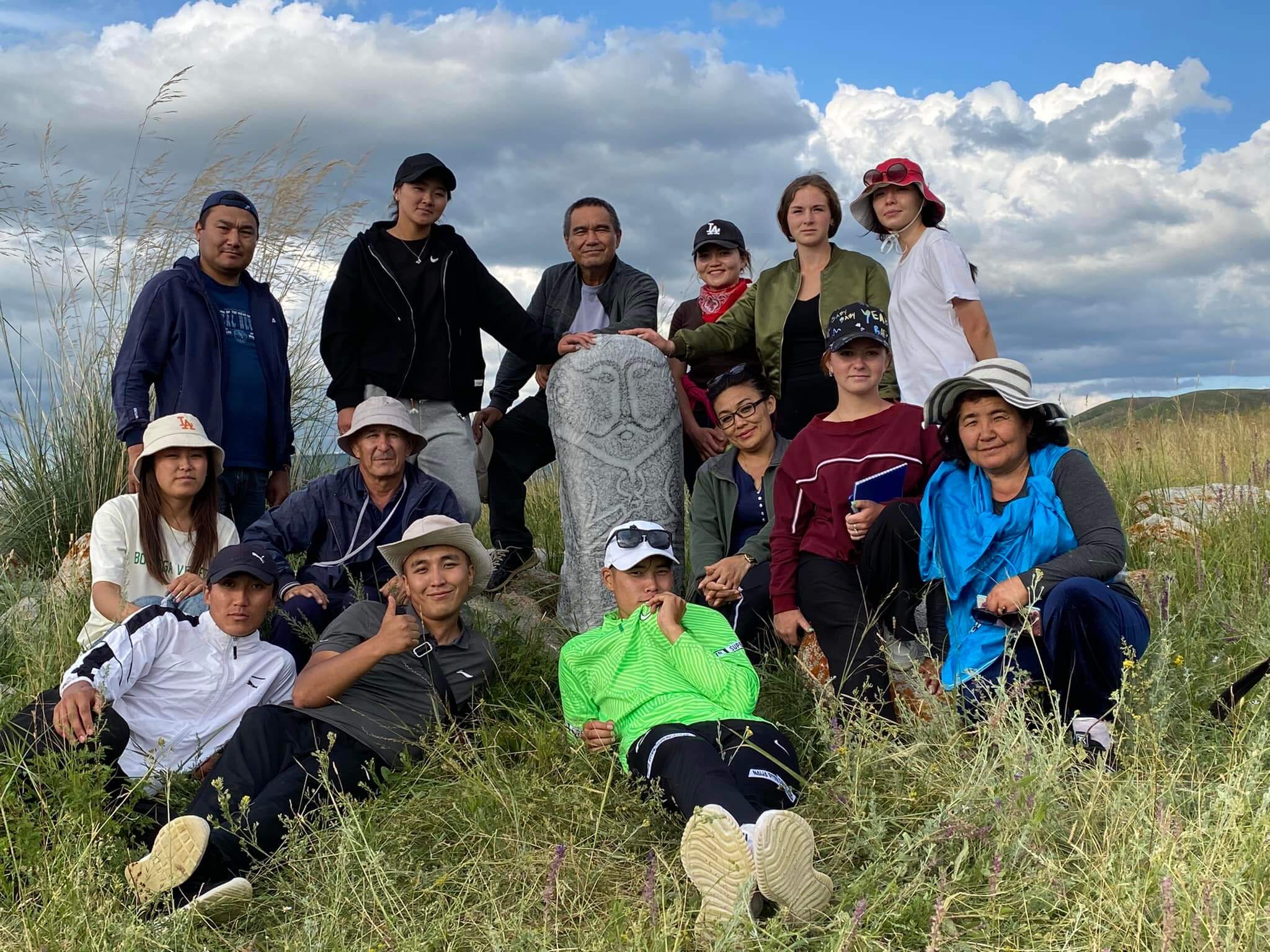
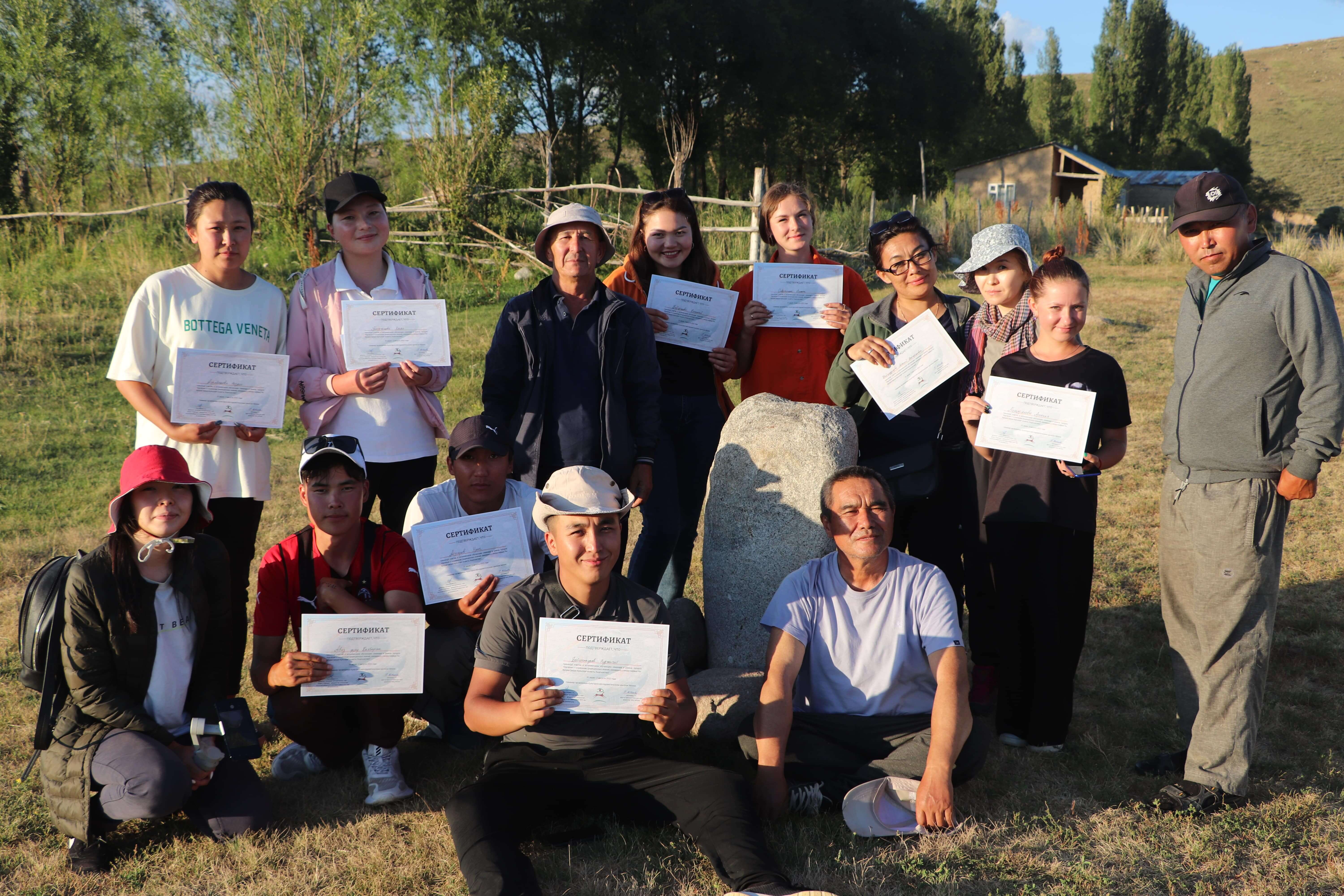
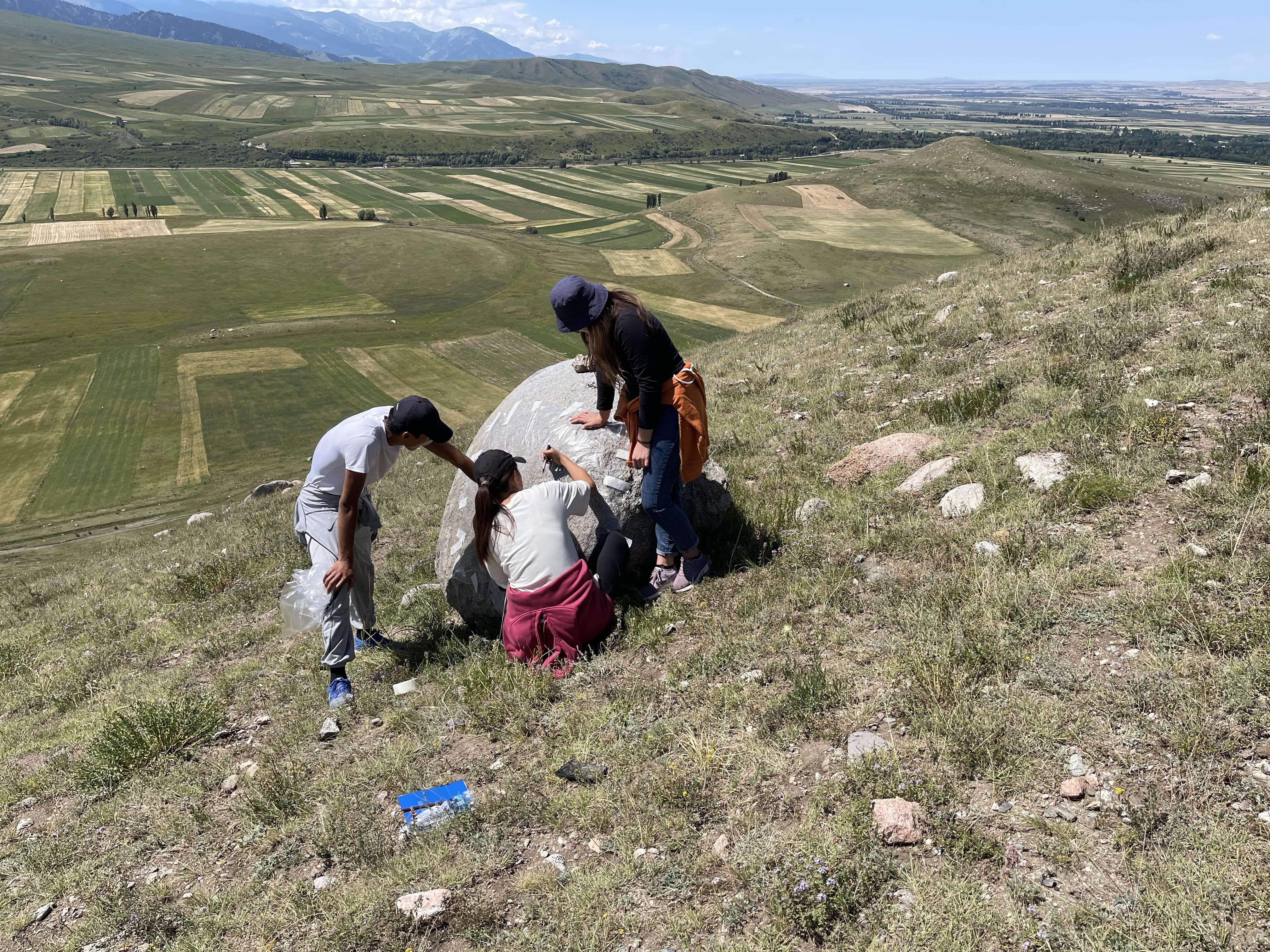
Ak-Bulun
The complex of historical and cultural monuments of Ak-Bulun village, previously unknown in the archaeology of Kyrgyzstan, was registered in 2020 by Aigine Cultural Research Center based on the information of local residents. In 2021-2022 the Aigine CRC together with archaeologists and the local community members, conducted field research and inventoried 116 stone carvings, 6 kurgans and 3 balbals. The complex, with a total area of 60 hectares, is located on the eastern slope of one of the branches of the Terskey Ala-Too Plateau, east of the Turgen River and Ak-Bulun village.
The petroglyphs comprise the main part of the complex and concentrated on two areas of the plateau – Kungöy-Bet and Kurgak-Koo. The petroglyphs were carved on large and medium-sized moraine boulders. Majority of images are carved by dotting and have varying degrees of patination. The vast majority of petroglyphs are small in size with relatively similar storyline and belong to different eras – the oldest ones dating back to the early Iron Age (IX-VII century BC – 1 century AD).
The second group of monuments consists of mounds, located on the uplands and at the foot of the mountain. They are round in shape, with stone lining along the edges, from 1.5m to 12m in diameter dating from the end of the 1st millennium BC. to 1st millennium A.D.

